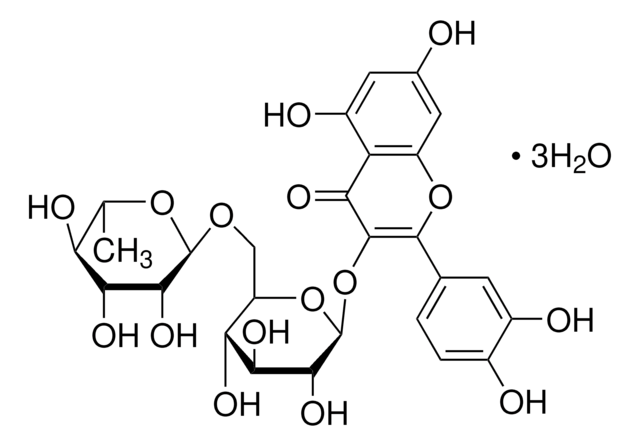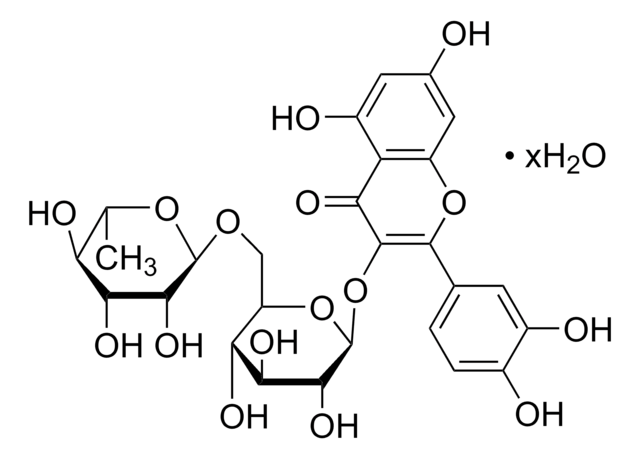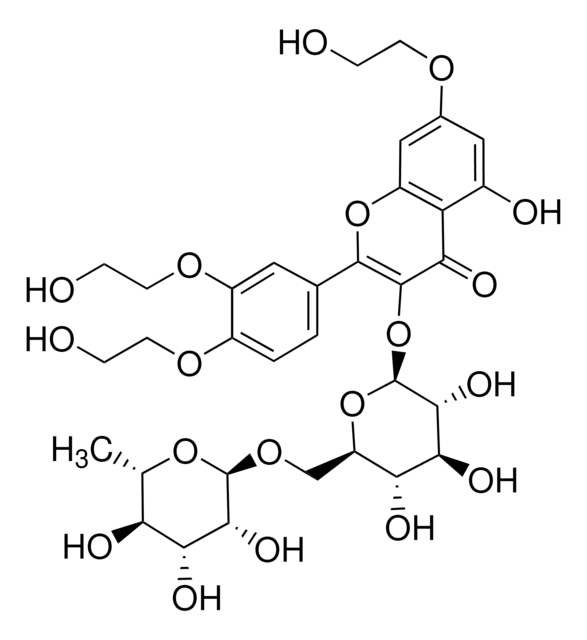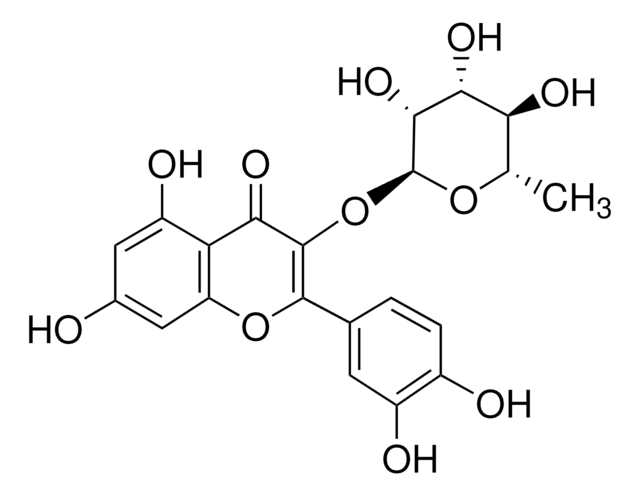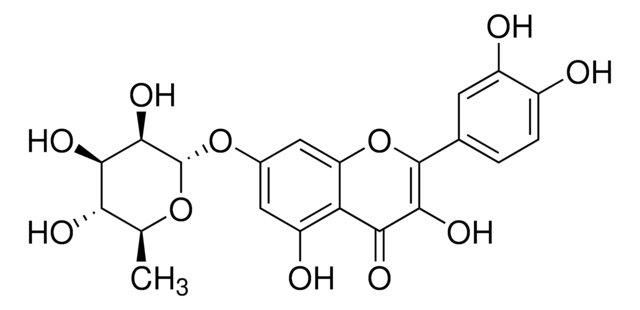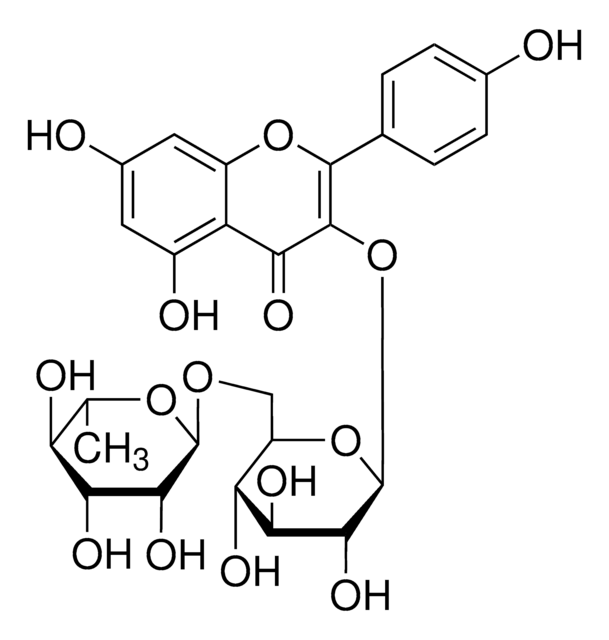PHL89270
Rutin
phyproof® Reference Substance
Synonym(e):
3,3′,4′,5,7-Pentahydroxyflavon-3-rutinosid, 3-Rutinosylquercetin, Globulariacitrin, Ilixanthi, Myrticalorin, Osyritrin, Paliurosid, Phytomelin, Quercetin-3-rhamnoglucosid, Quercetin-3-rutinosid, Rutosid, Sophorin, Tanrutin, Violaquercitrin
About This Item
Empfohlene Produkte
Qualität
primary reference standard
Produktlinie
phyproof® Reference Substance
Assay
≥95.0% (HPLC)
Hersteller/Markenname
PhytoLab
Anwendung(en)
food and beverages
Format
neat
InChI
1S/C27H30O16/c1-8-17(32)20(35)22(37)26(40-8)39-7-15-18(33)21(36)23(38)27(42-15)43-25-19(34)16-13(31)5-10(28)6-14(16)41-24(25)9-2-3-11(29)12(30)4-9/h2-6,8,15,17-18,20-23,26-33,35-38H,7H2,1H3/t8-,15+,17-,18+,20+,21-,22+,23+,26+,27-/m0/s1
InChIKey
IKGXIBQEEMLURG-NVPNHPEKSA-N
Verwandte Kategorien
Allgemeine Beschreibung
Rutin, also known as vitamin P, is an abundantly found polyphenolic flavonoid, known for its anti-inflammatory, antitumor, and anticancer properties.
Anwendung
- Electrochemical determination of rutin using a glassy carbon electrode (GCE), modified by a copper-complexed chitosan/multiwalled carbon nanotubes (Cu-CS/MWCNT) in fruit samples of orange, lemon, lime, and apple
- Cyclic voltametric detection and quantification of rutin in pharmaceutical formulations using novel nickel nanoparticles-graphene oxide composite-glassy carbon electrode (Ni-GO/GCE)
- Spectrofluorimetric quantification of rutin in a pharmaceutical sample using carbon dots (CDs) prepared from a non-essential amino acid precursor, L-asparagine
- Analysis of human serum and pharmaceutical tablet samples for the estimation of rutin by using a porous carbon-cobalt tungstate (PC/CoWO4) nanosheet based electrochemical sensor
- Simultaneous determination of rutin and isoquercitrin by differential pulse voltammetry (DPV) using glassy carbon electrode (GCE) modified with deposition of thio-β-cyclodextrin functionalized graphene/palladium nanoparticles (SH-β-CD-Gr/PdNPs) for pharmaceutical and medical analysis
- Ionic liquid vacuum microwave-assisted extraction (ILVMAE) of rutin, hyperoside, and hesperidin from Sorbus tianschanica leaf samples for their subsequent quantification by HPLC
- Simultaneous detection and quantification of vitexin, rutin, hyperoside, and quercetin in hawthorn flower and leaf extract samples using high-performance liquid chromatography combined with spectrophotometric detection (HPLC-UV)
Sonstige Hinweise
Rechtliche Hinweise
Lagerklassenschlüssel
11 - Combustible Solids
WGK
WGK 1
Flammpunkt (°F)
Not applicable
Flammpunkt (°C)
Not applicable
Choose from one of the most recent versions:
Analysenzertifikate (COA)
Don't see the Right Version?
If you require a particular version, you can look up a specific certificate by the Lot or Batch number.
Besitzen Sie dieses Produkt bereits?
In der Dokumentenbibliothek finden Sie die Dokumentation zu den Produkten, die Sie kürzlich erworben haben.
Kunden haben sich ebenfalls angesehen
Unser Team von Wissenschaftlern verfügt über Erfahrung in allen Forschungsbereichen einschließlich Life Science, Materialwissenschaften, chemischer Synthese, Chromatographie, Analytik und vielen mehr..
Setzen Sie sich mit dem technischen Dienst in Verbindung.